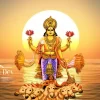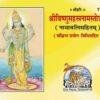Raksha Bandhan, a cherished festival deeply rooted in Hindu traditions, celebrates the extraordinary bond between siblings. Known as ‘the bond of protection, obligation, or care,’ Raksha Bandhan holds a special place in the hearts of millions, as it honours the unique relationship between brothers and sisters. Falling on the last day of the lunar calendar month of Shravan, this year’s Raksha Bandhan will be observed on the 30th of August, a Wednesday. Steeped in rich history and significance, Raksha Bandhan transcends cultural boundaries, embodying the values of love, loyalty, and familial unity. This article explores the profound meaning behind Raksha Bandhan, delves into its historical roots, explains the rituals that characterize the occasion and sheds light on the optimal timing for its observance, all while highlighting its relevance in today’s world.
Check out our Rakhi Collection
Raksha Bandhan History and Significance
1. Ancient Origins and Legends:
- Raksha Bandhan’s roots can be traced back to ancient Indian mythology and legends.
- One popular story involves Draupadi and Lord Krishna. When Krishna injured his finger in a battle, Draupadi tore a piece of her saree and tied it around his finger as a bandage. Touched by her gesture, Krishna vowed to protect her in times of need.
- Another tale centers around Rani Karnavati of Mewar, who sent a Rakhi to Emperor Humayun seeking his help to defend her kingdom. Impressed by her plea, Humayun promptly offered his assistance, showcasing the protective aspect of Raksha Bandhan.
2. Historical Instances of Unity:
- Raksha Bandhan has not only mythological significance but also historical instances of fostering unity and harmony.
- During the Bengal Partition in 1905, Rabindranath Tagore initiated the Rakhi Mahotsav to bridge gaps between Hindus and Muslims. This celebration aimed to counteract the British attempt to sow division between communities.
3. Symbolism of Protection and Bond:
- The term “Raksha Bandhan” translates to “the bond of protection, obligation, or care.”
- The festival symbolizes the deep bond between siblings, specifically the protective role of brothers in their sisters’ lives.
- Sisters tie Rakhi, a sacred thread, around their brothers’ wrists, signifying the brothers’ promise to safeguard and care for their sisters.
4. Strengthening Family Values:
- Raksha Bandhan goes beyond the individual relationship of brothers and sisters; it emphasizes family values and unity.
- The festival brings together family members, reinforcing the importance of love, respect, and support within the family unit.
5. Unity Amidst Diversity:
- Raksha Bandhan transcends cultural and religious boundaries. It is celebrated by Hindus, Sikhs, Jains, and people from various backgrounds.
- The festival serves as a reminder of the shared values that bind humanity together, promoting harmony and understanding.
6. Contemporary Significance:
- In modern times, Raksha Bandhan has evolved beyond its traditional context.
- It is no longer restricted to biological siblings; friends and acquaintances also exchange Rakhis as a token of friendship and goodwill.
- The festival’s spirit of protection and care has extended to promoting social responsibility and taking care of the environment.
7. Emotional Bond and Celebration:
- Raksha Bandhan fosters emotional connections and cherished memories among siblings.
- The ritual of tying Rakhi and exchanging gifts strengthens the emotional bond, creating a sense of belonging and security.
8. Essence of Raksha Bandhan:
- Raksha Bandhan stands as a celebration of love, protection, and loyalty.
- It embodies the timeless values of family, unity, and the unbreakable bond between siblings.
- The festival is a reminder to cherish relationships, support one another, and celebrate the essence of humanity’s interconnectedness.
In essence, Raksha Bandhan encapsulates the profound significance of relationships, the promise of protection, and the celebration of unity that transcends time, culture, and boundaries.
Check out our Rakhi Collection
Raksha Bandhan Pooja Vidhi
Raksha Bandhan, the festival that celebrates the sacred bond between siblings, involves a special ritual known as the “pooja vidhi.” This ritual is performed with devotion and signifies the deep affection and protection siblings have for each other. Here’s a step-by-step guide on how to perform the Raksha Bandhan pooja vidhi:
Materials Needed:
- A small pooja thali
- Diya (oil lamp)
- Roli (vermilion powder)
- Rice grains
- Sweets
- Rakhi (sacred thread)
Procedure:
Step 1: Preparation
Cleanse the area where the pooja will be performed and arrange all the materials on the pooja thali.
Step 2: Lighting the Diya
Begin the ritual by lighting the diya (oil lamp) on the pooja thali. The diya symbolizes the light of knowledge and positivity.
Step 3: Applying Tilak and Rice
Take some roli (vermilion powder) and mix it with a few rice grains. Apply a tilak of roli and rice on your brother’s forehead. This signifies your blessing for his well-being and prosperity.
Step 4: Aarti
Hold the diya in your hand and perform an aarti in front of your brother. Circle the diya in a clockwise direction around his face while chanting aarti mantras or a simple prayer for his protection and success.
Step 5: Tying the Rakhi
Take the Rakhi, the sacred thread, and tie it around your brother’s right wrist. As you tie the Rakhi, recite a prayer or mantra asking for his safety and happiness. The Rakhi symbolizes the bond of love and protection.
Step 6: Offering Sweets
Offer sweets to your brother as a symbol of sharing the sweetness of your relationship. He accepts the sweets, signifying his promise to always protect and care for you.
Step 7: Exchange of Gifts and Promises
In return for the Rakhi and sweets, your brother gives you gifts as a token of his love and care. This exchange represents the mutual promise of love and support.
Step 8: Expressing Gratitude and Blessings
Express your gratitude to your brother for his presence in your life and for the protection he promises. Bless him with your heartfelt wishes for his happiness and success.
Step 9: Family Gathering
After completing the pooja vidhi with your brother, involve other family members in the celebration. Share the joy of the occasion with them, exchange gifts, and strengthen the familial bond.
Check out our Rakhi Collection
Ritual Variations and Cultural Aspects
Raksha Bandhan, a festival that celebrates the bond between brothers and sisters, holds deep cultural significance across India. While the core essence remains consistent, there are intriguing variations and cultural aspects associated with the festival that reflect the diversity and richness of the country’s traditions.
- Tying ‘Lumba Rakhi’: In some Indian ethnic groups, especially the Rajasthani and Marwari customs, the sister-in-law is included in the celebrations. To do this, it is customary to tie a “Lumba Rakhi” or “Bhabhi Rakhi” around the wife of the brother’s brother’s bangle. By engaging in this custom, the sister-in-law is demonstrating her equal responsibility for the welfare of her husband’s sisters as well as her position in the family. The cohesiveness and respect amongst family members are emphasised.
- Interfaith and Intercommunity Bonds: Raksha Bandhan has also been known to transcend religious and community boundaries. In some instances, neighbors and close friends, regardless of their religious backgrounds, exchange Rakhis as a token of friendship and goodwill. This practice showcases the festival’s ability to foster bonds beyond blood relations and promote harmony within diverse communities.
- Artistic and Creative Rakhis: As time progresses, the design and creation of Rakhis have evolved significantly. Sisters often invest their creativity in making personalized Rakhis that reflect their brother’s interests, hobbies, or profession. This artistic touch adds a unique and heartfelt dimension to the traditional exchange.
- Modern Sibling Relationships: Raksha Bandhan is not limited to biological siblings; it extends to celebrating the bond between cousins and even close friends who share a sibling-like relationship. This modern adaptation broadens the scope of the festival, acknowledging the importance of emotional bonds beyond traditional family structures.
- Digital Celebrations: In the digital age, distance is no longer a barrier to celebrating Raksha Bandhan. Siblings who are physically apart exchange virtual Rakhis and heartfelt messages through social media and online platforms. Virtual celebrations have become a meaningful way to bridge the geographical gap and maintain the spirit of the festival.
- Regional Customs and Traditions: Different regions of India celebrate Raksha Bandhan with their unique customs. For instance, in Maharashtra, people tie a ‘Nariyal Rakhi’ along with a regular Rakhi, symbolizing prosperity and well-being. In Haryana, women tie Rakhis to trees as a gesture of nature worship.
- Symbolism and Values: Beyond the physical act of tying a Rakhi, the festival symbolizes values such as protection, loyalty, and love. These values are not limited to gender or age. In some families, the tradition is reversed, with sisters offering protection and blessings to their brothers.
- Charitable Initiatives: In recent times, Raksha Bandhan has also taken on philanthropic dimensions. Many organizations organize events where Rakhis are tied to soldiers, police officers, and other public servants as a mark of respect and gratitude for their service.
Raksha Bandhan’s ritual variations and cultural aspects showcase the festival’s adaptability, inclusivity, and enduring relevance in a rapidly changing world. These diverse practices underline the festival’s universal message of strengthening bonds, spreading love, and upholding the values of protection and unity.
Check out our Rakhi Collection
Raksha Bandhan Mahurat for 2024
In the context of Raksha Bandhan, a “Muhurat” refers to an auspicious time window to perform rituals and ceremonies. For the Raksha Bandhan on August 19, 2024, the following Muhurats (based on the different region timezone) are significant:
Pradosh Time Raksha Bandhan Muhurat
Start: August 18 | 5:34 PM in (United States)
End: August 19 | 2:25 PM in (United States)
Raksha Bandhan Bhadra End Time
August 19 | 4:00 AM in (New_York): It’s advised to complete all rituals before this time, as Bhadra is considered inauspicious.
Raksha Bandhan Bhadra Punchha
Start: August 19 | 12:21 AM in (New_York)
End: August 19 | 1:23 AM in (New_York)
This window can be used for Rakhi tying if necessary, but Bhadra’s influence should be minimized.
Raksha Bandhan Bhadra Mukha
Start: August 19 | 1:23 AM in (New_York)
End: August 19 | 3:07 AM in (New_York)
Similar to Bhadra Punchha, this time is less favourable for essential ceremonies.
Purnima Tithi Begins: August 18 | 5:34 PM in (New_York) – This marks the start of the full moon day, carrying its own spiritual significance.
Purnima Tithi Ends: August 19 | 2:25 PM in (New_York) – The full moon phase concludes early on August 31, ending the Purnima Tithi.
Muhurats guide the timing of rituals, blending astrological, cultural, and traditional considerations to enhance the spiritual essence of Raksha Bandhan.
Check out our Rakhi Collection
Conclusion
Raksha Bandhan, a cherished Hindu festival, exemplifies the enduring values of love, protection, and unity among siblings. Rooted in ancient mythology and historical instances of unity, this festival transcends cultural boundaries, symbolizing family values and shared humanity. As it evolves to encompass modern relationships and social responsibility, Raksha Bandhan remains a celebration of emotional bonds and promises of support. Ritual variations, cultural adaptations, and Muhurats underscore its universality, making it a meaningful observance that echoes through time, culture, and diverse traditions.



















Add comment